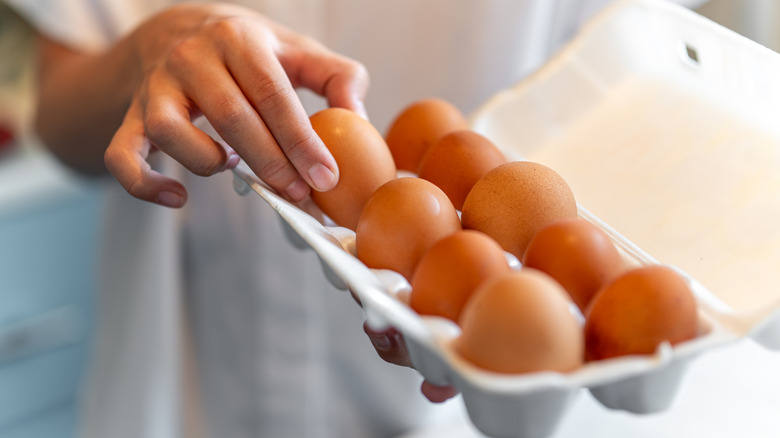Have You Ever Noticed That Egg Prices Spike Every Winter? Here's Why
If you've ever felt like egg prices tend to creep up as the temperature falls, you're definitely onto something. Although eggs are the food that has seen the greatest price increases from inflation, historical data shows the price of eggs generally rises during the winter holidays. But just what is it about the end of the year that seems to make prices rise? The most essential microeconomic explanation is that more people are cooking and baking around Thanksgiving and Christmas than at other times of the year.
The weekly USDA Egg Markets Overview explicitly states that the "December baking season" as the major driver of demand for eggs in the latter months of the year. American Egg Board president and CEO Emily Metz aknowledges that November and December are peak egg season, telling PBS News, "You can't have your holiday baking, your pumpkin pie, your stuffing, without eggs."
Rising egg prices are easy to understand from the supply side as well. Egg inventories for the weeks leading up to Thanksgiving and Christmas show a trend for retail stock to swell in the run-up to the holidays, only to plummet during the holiday weeks.
Avian flu is exacerbating seasonal trends
American families cheerily baking en masse may explain the historical trend of higher holiday egg prices, but the modern reality is more volatile. Prices were 70.67% higher in November 2024 than November 2023. People are feeling the pinch, venting their pain through darkly hilarious egg memes or blaming greedy corporations.
While price gouging is certainly a factor, the major intensifier of holiday "eggflation" is the highly pathogenic avian influenza (HPAI) virus. Avian flu is deadly to chickens, killing entire flocks in a matter of days. There is no treatment available, so the USDA is forced to quarantine and euthanize infected birds. Since the first confirmed infection of a commercial flock in early 2022, HPAI has impacted more than 73 million egg-laying hens in the U.S.Complications from avian flu drive up the costs of egg production year-round, but it's worse in colder months. HPAI outbreaks begin to rise in October and peak in February. One reason for the increase is seasonal migration of wild birds, which ramps up exposure to commercial chicken flocks via droppings. Moreover, the virus survives in fecal matter better in colder temperatures. If that wasn't enough, these seasonal spikes in avian flu coincide with hens naturally laying fewer eggs in the winter.

